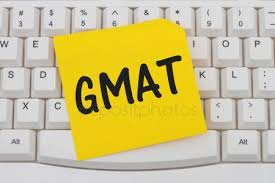
The first step in your global MBA journey is your GMAT exam. We are going to explain all about the GMAT exam in this blog post so that you can plan your GMAT journey accordingly. The GMAT exam is acceptable across the globe and more than 7000 programs use this score for admissions to various programs such as MBA, MIM, etc. You can attempt this exam 5 times in a year and 2 times is average for GMAT test-takers. The score is valid for 5 years. Lets review all about GMAT exam.
All about GMAT Exam – Objective
GMAT stands for Graduate Management Admissions Test. It’s objective is to assess your skills, the most relevant ones which you’ll need in the business world. Most of the global MBA programs accept this score (so do most of the MIM programs).
All about GMAT Exam – Structure
The exam is a total of 3.5 hours, with two optional breaks in between.
Section 1 – AWA (Analytical Written Assessment): It assesses your critical thinking ability, and tests your ability to communicate your ideas in 30 minutes. You’ll be given an argument/statement and you’ll have to discuss this in the next 30 minutes. You’ll be scored from 0-6, so anything around 5 or 5+ would be a good score.
They’ll be judging or assessing you on your basic English language skills, your ability to communicate your ideas well, the structure of your whole argument, and the supporting examples (it’s very important to be prepped with good examples to support your answers). This section is being assessed by two judges – one is a human reader and the other is a computer reader.
Section 2 – Integrated Reasoning: This exists to assess your data analytical skills. How well can you synthesize the data and present it into valuable information? The data can be in any form – pictures, graphs, et cetera. It’s a 30-minutes task. You’ll be given 12 questions, and the score will be from 1-8, so anything above 6 is a good score.
Section 3 – Quantitative: It aims to judge your problem-solving abilities and data sufficiency skills. The whole section is around 62-minutes, and you get 31 questions to attempt. The scoring goes from a minimum of 6 to a maximum 51, based on the number of questions you attempt.
Section 4 – Verbal: This is to check your verbal reasoning. It’s an important section. They’ll be testing you on multiple dimensions, starting from reading comprehension, to critical reasoning, to sentence correction. The scores are from 6 to 51.
Subscribe for the latest videos on a variety of careers, study abroad, interview, resume, etc.
https://www.youtube.com/VikingsCareerStrategists
All about GMAT Exam – Scoring
You will be scored out of 800 points. Here, only two components are involved: quantitative and verbal. Whatever you score in these two components will be your total score, like getting 720 or 740, which is a combination of the scores in the above-mentioned components. It does not include scores from your AWA or integrated reasoning.
But schools always look at everything holistically and they consider all the scores, over and above your scores in GMAT. That’s why all the sections are very important.
Let’s look at how they score applicants. The number of questions you attempt, the number of correct questions you answer, and the difficulty level of a question is also something they look into. The more difficult questions you solve, the higher your graph goes.
All about GMAT Exam – Pattern
It’s a computer adaptive pattern which customizes your ability in real-time. This means that you need to give more accurate answers. For example, you get the first question of medium difficulty, if you do that correctly, the next question will be of higher difficulty. The more correct answers you give, the higher the difficulty level increases. So focus on the accuracy of your answers. This is the perfect way to score a higher point. This is important because even if you don’t attempt all the questions if your answers are accurate, your scores will be just fine.
All about GMAT Exam – The Perfect Score
It depends on a lot of factors. Let’s suppose that most people will claim that around 700 is a good score but there are other parameters to look into. In your application, your work experience, background, aspirations, what schools you’re targeting, which region you’re targeting, everything mentioned here is important while considering a good score in your GMAT.
For example, GMAT average scores at Harvard or Stanford are usually 720-740. Even if you get a score like 700-720, the chances of you getting in are low unless you have an outstanding and diverse profile or portfolio. But that is usually a rare case. If you get a score of 680-690 with a very good and strong profile, and multiple achievements throughout your career, that could land you a seat in top universities. But the score should be close to the above-mentioned average, even with a good solid background. Keep an average from different schools as your target score, and work your way around it.
All about GMAT Exam – The Right Time
There’s never usually a perfect time for these exams but make sure you at least take the test 3 to 4 months before Round 1 of applications. The first round mostly starts in August or September. A good time to take the test would be May end or June first week. This way you would at least have time to improve your score if need be. A score of 700 can be increased to 740, hence increasing your chances of a scholarship.
We hope this information was valuable and sufficient in helping you work your way around GMAT. Feel free to connect with us for a free consultation. All the best!!!



